Last Saturday, the city woke up to media reports that Bellandur Lake was on fire. Coincidentally, I happened to bike past the lake early morning on Sunday. I was on my way to Kaikondrahalli Lake where I wanted to spend some time, before biking to Puttenahalli Lake in J P Nagar. It was a big day for the trustees of the Puttenahalli Lake as treated water would be formally released into the water-body that day. It was a milestone in their years of struggle to rejuvenate the lake. In nine months, the lake would have a large amount of water, year round. I knew most of the trustees, and I wanted to share their happiness with them. It promised to be a Beautiful Sunday Morning!
As I entered Yemalur, after biking past the HAL airport on Kariyammana Agrahara Road, the following sight greeted me, as I parked my bike on the road, and took a few photographs.
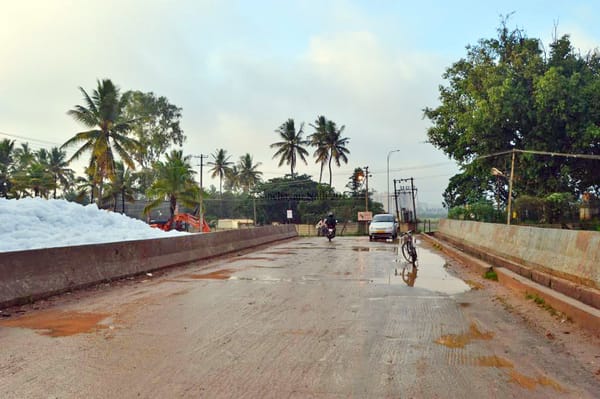
Pic: Sanchayan Nath
I biked a few meters ahead, and stopped to take another photograph, as the road turned to the right.

Pic: Sanchayan Nath
It almost appeared as if the JCB had given up in exhaustion, after failing in the humongous task of dealing with the problem of the ‘Bellandur snow’.
As I biked ahead, I saw a man sitting on the pavement next to a small road-side temple. The Bellandur snow continued to flow on my right. I stopped to take another photograph. The man got up and came to me. He spoke to me in Hindi: “There is kerosene petrol in it. Can you smell it?” He pointed out the exact location from where I would get a good snap.
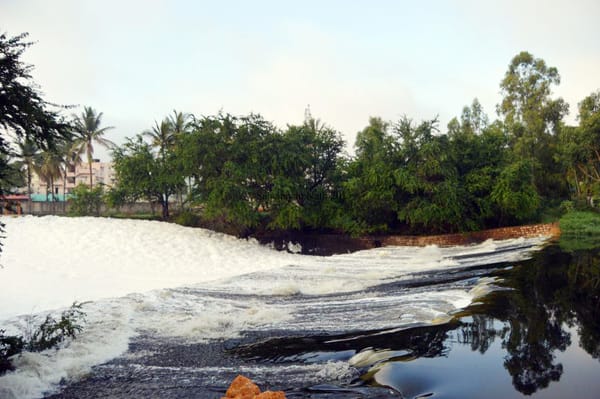
Pic: Sanchayan Nath
As I continued to bike towards Iblur junction, I came across a spot where the Bellandur snow had covered a part of the road. A couple of young kids were playing with the ‘snow’. As they jumped around amidst giggles and peals of laughter, the ‘snow’ would rise up into the air and people would stop and take photographs.
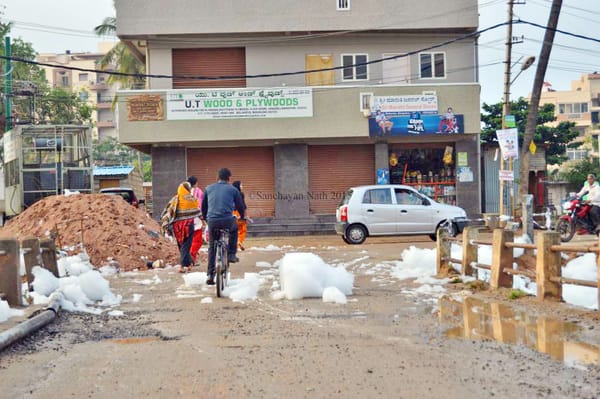
Pic: Sanchayan Nath
As these kids saw me take photographs, one of them came up to me and we exchanged a few words. I understood from his accent, that like me, he too was a Bengali. As he gained enough confidence, he asked me – “আমাদের একটা ফ াদটা তুদে ফেদে না?” (Won’t you take a photo of me?)
I asked both him and his friends to stand with their backs to the west, so that the rays of the rising sun would fall on their face.
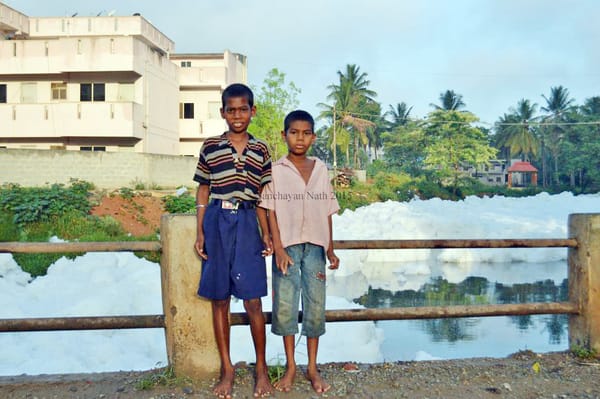
Pic: Sanchayan Nath
The younger child then came up to me and asked – “ফ াদটা তা ফের কদর ফেদে না?” (Won’t you give me a copy of the photo?)
As I spoke to them, it struck me that like me, these children too were economic immigrants – forced out of their ancestral homes in distant West Bengal or Bangladesh – for better opportunities. We spoke the same language, we probably ate similar kind of food at home (assuming their parents earned enough to put three meals a day on their table) and celebrated similar cultural festivals. However, the differences between us were startling – I was on a fancy bike with a fancy camera, and these kids did not even have chappals on their feet.
They were happily playing with the Bellandur snow, unaware that there could be harmful pollutants in that substance, which could affect their well-being in the long run.
As I showed this photograph to a friend, he commented, “Dada, I guess you should be referring to them as ‘Bengali speaking’; economic immigration is very different from illegal immigration…”
I have no way of knowing if they are illegal immigrants from Bangladesh or legal ones from West Bengal. But, I do know that West-Bengalis and Bangladeshis refer to themselves as Bengali, as do my NRI Bengali friends from the US.
Irrespective of whether the children posing for the photographs are illegal Bengali immigrants from Bangladesh, legal Bengali immigrants from West Bengal, legal immigrants from other Indian states, or local Kannada speaking native inhabitants, these are young innocent children who are unaware of the harmful consequences of the Bellandur snow.
As I turned to the east, I took the following photograph of the sight that greeted me.
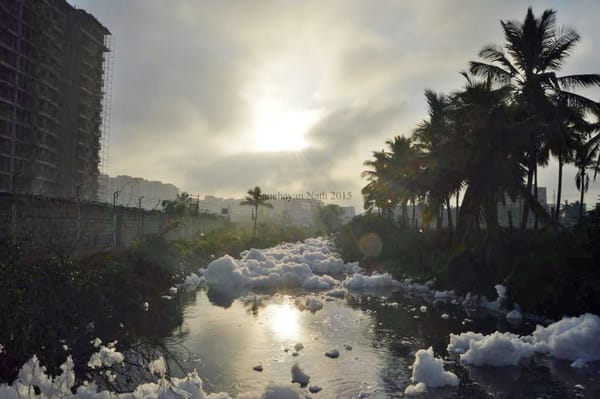
Pic: Sanchayan Nath
I saw the Bellandur snow slowly wind its way to the high-rises in the distance.
I wish I had taken this photograph somewhere in an imaginary pristine land, in early spring where the snow had just melted, where the snow was actually made of pure water; it would have been such a Beautiful Sunday Morning!
Related Articles
Lather from Varthur lake is just a tip of the pollution iceberg!
Invitation for the inauguration of the treated water pipeline from South City STP to Puttenahalli Lake
How govt helps SEZ trump Bellandur lake